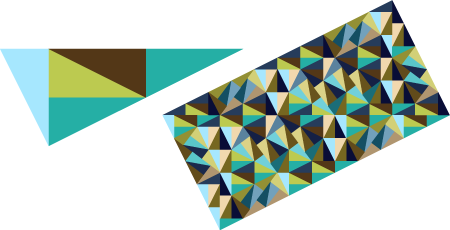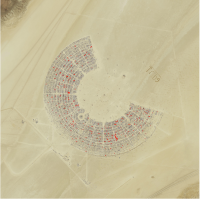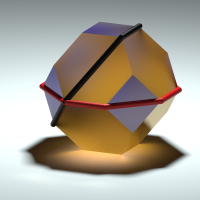The 2×1 rectangle and Domes
Next week I am going to be at the Gathering for Gardner, an exciting meeting of mathematicians, magicians, puzzlers and others inspired by the life and work of Martin Gardner. This post is a version of the talk I will be giving.
The 2×1 rectangle is not one of mathematics most celebrated shapes.
Yet it is so much more flexible than the more common square.
Even better you can cut it in half on the diagonal to make a 2×1 right triangle,
which has the beautiful property that it is a 5-reptile. Five copies of it come together to make a larger version. Repeating this gives the Conway Pinwheel tiling, which has triangles occurring in an infinite number of directions.
Yet the 2×1 rectangle is a lot more common in life, just go into your local hardware store:
Using the diagonal cut triangle and uncut rectangles, Vinay Gupta designed the hexayurt,
a small house that can be built from 12 sheets, without waste. In contrast to geodesic domes, that cannot be made from sheet materials without making many cuts or wasting material. Here is one:

and a plywood one:

Hexayurts have become one of the standard accommodations at Burning Man:

or look at this map, the red dots show the location of the hundreds of hexayurts at last years event.
Vinay set me the challenge of making larger domes using these shapes. The hexayurt itself suggests that hexagons will be important, and we can put two 2×1 rectangles together to make a square. Squares and hexagons come together to form the truncated octahedron.
This obviously would not work as a dome, so we must cut it. There are two natural cuts that can be made. One perpendicular to the 4-fold axis, and one perpendicular to the 3-fold:
So we have two new larger domes, the tri-dome and the quad-dome:
What is really cool is that both of these domes were made for Burning Man last year:
Tri-dome:


One neat thing about the truncated Octahedron is that it is a space-filler. You can use them to tile 3d space. We can therefore bring quad-domes together to make even larger structures, like this one:












Pingback: Travels in a Mathematical World
Super cool. I just assembled the little paper one you gifted at G4G. I also posted a link to this on a burner fb page. If I had a ticket this year, I’d seriously consider trying to build one for the Playa. Alas, I was denied in the lottery and will be making other plans. I still love the design, nonetheless.
Great to hear you like them. We should work together on a gasket version 😉
Pingback: Rice, Rectangles, and Mathmagicland « Math Munch
I love the new additions to the hexayurt family. What software program did you use to create the models above? They’re very well done.
I used Rhino3d and Thearender to make the images.
Pingback: Coum-Unity » Skull Cults: The Only Sound Foundation for a Modern Economic Geography